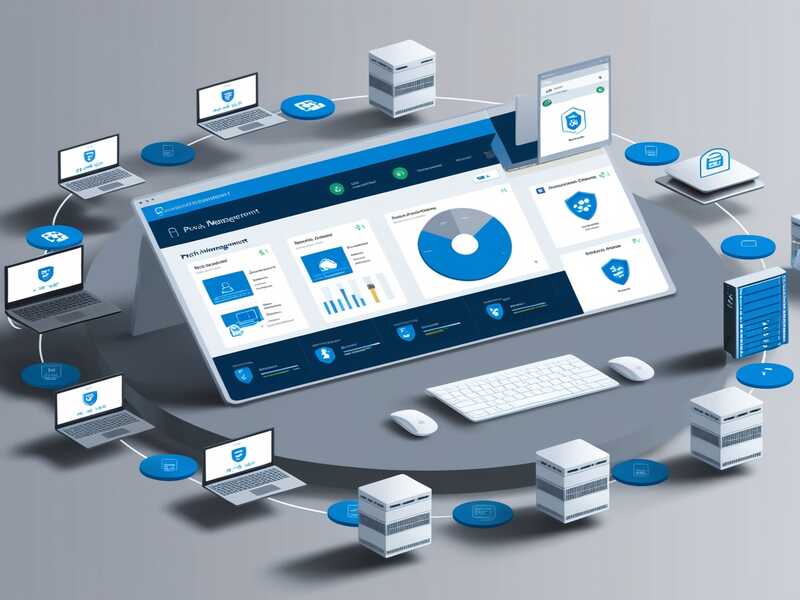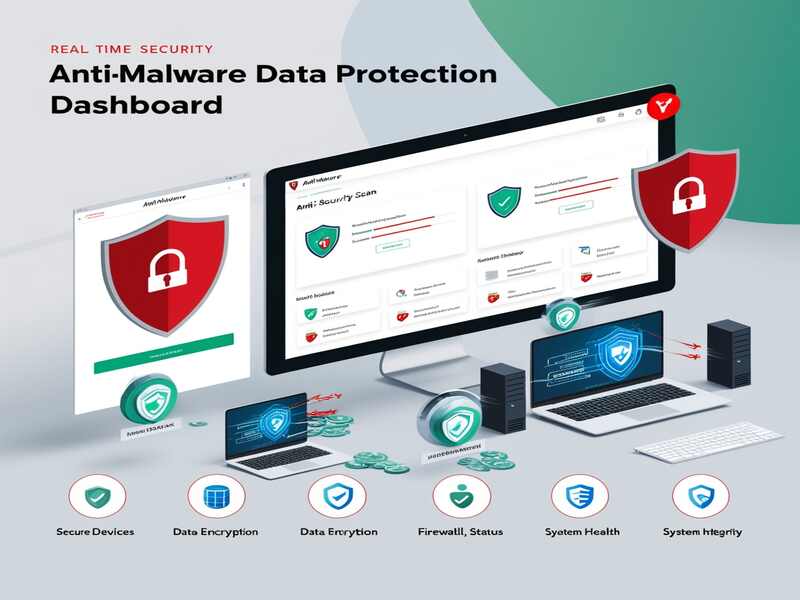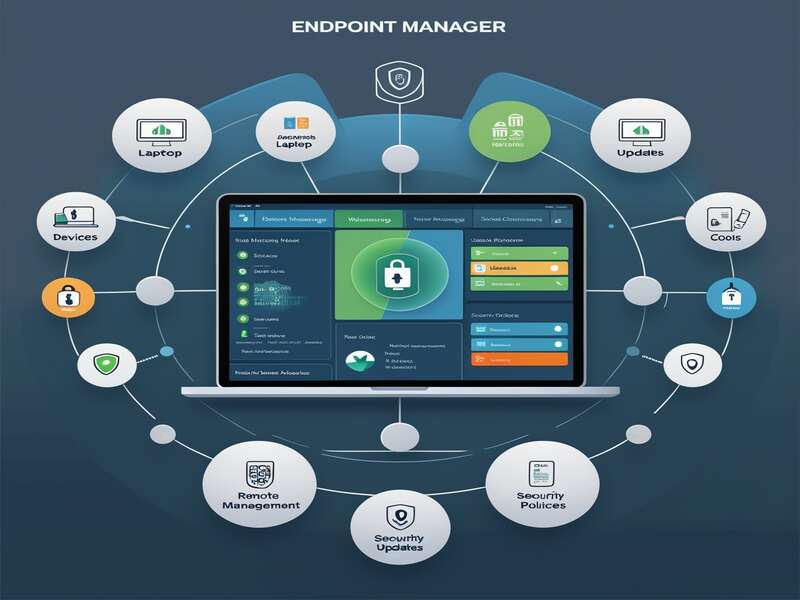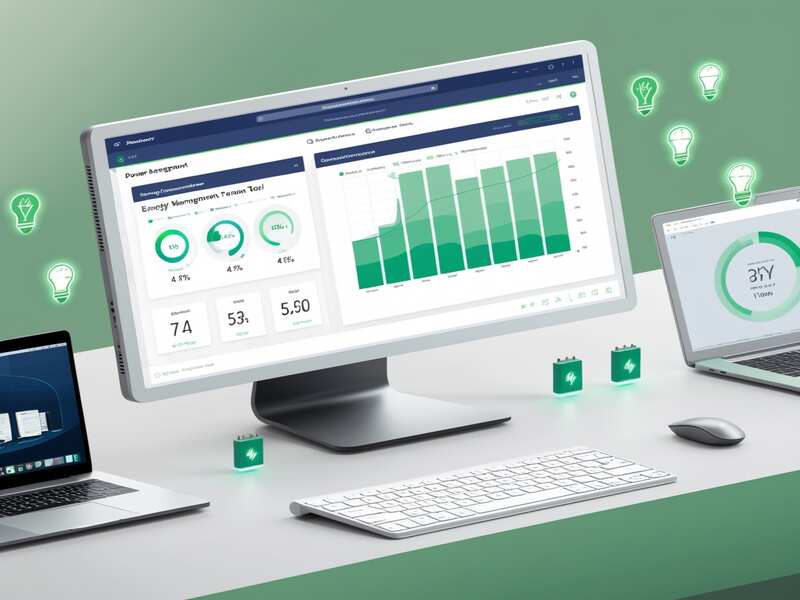IBM BigFix Tutorial
One of the challenges faced by organizations is the need to manage software licenses that are never used. This can result in wasted resources and increased costs.
To address these issues, organizations can implement a campus-style environment, where employees work for a specific number of hours & days leading to low consumption of power.This can help reduce energy consumption and save money on electricity bills.
However, not all hardware alone is sufficient; applications can introduce issues like PC narcolepsy and PC insomnia, which can prevent machines from going to sleep.
To address these issues, organizations can implement a single low-cost solution, such as IBM BigFix.

What is IBM BigFix?
IBM BigFix is an intelligent agent that provides real-time data for various external aspects, including life cycle management, patch hardware software, inventory OS deployment, remote control, software usage and analysis, and mobile devices.
By utilizing Power Management tools, users can avoid surprises, renegotiate contracts, and avoid penalties.
Additionally, the tool allows for easy importation of contracts into software usage and analysis, ensuring compliance with licensing requirements.
Features of IBM BigFix
IBM BigFix offers a single solution console, which allows for easy integration with other systems.
The environment is constantly updated, and the system can handle up to 250,000 endpoints. A real-time reporting system is provided by the Intelligence System, which sits down at the agent.
The system also provides anti-malware data protection, which can be controlled by using DLP for device control.
Another key feature of the system, allowing for complex tasks such as patching a SQL cluster or an exchange. For example, a security cluster can be patched using a DLP for device control. This allows for controlling the firewall on different machines and even isolating them.

Components of IBM BigFix
The product covers three areas: single patch management, a single patch management console, and mobile device management.
In the first area, patch management is described as a tool that allows users to view a range of different operating systems and types.
The console can also be used to analyze software usage and identify fixed-element vulnerabilities (fixels) in various operating systems.

IBM BigFix Training

Importance of a Controller in IBM BigFix
A controller doesn’t have to be a dedicated server, but it should be capable of handling the bandwidth of data coming from the corporate center to the small office.
If you want to control machines in the small office, you can use a server backup domain to print the server backup domain.
Patch Management in IBM BigFix
Patch management in organizations can significantly improve their overall security and efficiency. By utilizing IBM’s patch management system, organizations can streamline their patching process, reduce patch time, and improve their overall patching efficiency.
Additionally, the use of endpoint management tools like Endpoint Manager can help organizations increase their first pass remediation rate and overall patching efficiency.
Overall, patch management is a crucial aspect of maintaining a secure and efficient network environment for businesses and organizations.

Automated self-assessment system in BigFix
The automated self-assessment system is a valuable tool for managing patching tasks efficiently and effectively.
It saves users time by automating the process, ensuring that patches are applied correctly, and identifying which machines miss the necessary patches.
By focusing on the integration and implementing effective change management, the system ensures that the system is running smoothly and efficiently.
Power Management Module
The power management module is a crucial tool for managing and optimizing the energy consumption of a system. It allows users to control the power usage of their systems, such as enforcing machines to sleep or wake up, and adhering to patching windows.
This can help reduce the need for additional hardware installation and ensure that the system is always running.
The power management module also provides a “what if” calculator, which allows users to view their current power usage and adjust their power management policies accordingly.
By analyzing the different types of machines and their corresponding power consumption, users can make informed decisions about how to optimize their power management.
The Big Fix console provides predefined tasks or fixlets that can be run on machines to bring power management under control. These tasks can be enacted into policies, creating a power management structure for the organization.
This structure can be created on desktops, allowing organizations to manage their power more efficiently.

IBM BigFix Online Training

Software usage & Analysis
Software usage and analysis are crucial tools for managing and optimizing software usage. By tracking software usage and analyzing usage, organizations can identify areas where they are paying more for unnecessary licenses and make informed decisions about their software usage.
Analysis is a process that involves collecting information from endpoints on a periodic basis, done through fixlets and reporting that information back to the server.
This process begins when the product is first installed and activated for the numbers that are installed out of the box. As the product is installed and added extra components, additional analysis is enabled as required.
The analysis will start to collect information from the endpoints and report them back to the server. In this case, the server itself is the only endpoint, as the agent is placed on the server.
Benefits of using Endpoint Manager
Endpoint managers family offers various features, including life cycle management, patch management, mobile security, compliance server automation software, usage analysis, power management, and core protection.
These features help organizations manage their devices effectively, ensuring that they are protected from potential threats.
One of the key benefits of using an Endpoint Manager is the ability to wipe or erase corporate data, as well as track devices for theft or return stolen devices.

This allows organizations to maintain control over their devices and ensure that they are not compromised.
Another benefit of using an Endpoint manager is the ability to track devices for theft or loss, allowing for proactive measures to prevent data leakage.
This can include implementing robust security measures, such as firewalls and antivirus software, to detect and prevent potential threats.
Importance of Mobile Device Management
From a corporate perspective, this includes the potential loss of information that may fall into the wrong hands, such as unlocked devices or unlocked devices with access to corporate information on VPNs, emails, and important contacts.
MDM products from various vendors offer various features to enhance visibility and enable various device functions. These features include setting VPN and Wi-Fi configurations, deploying certificates to devices, showing users’ device applications, and enabling MDM on the device.
By ensuring that corporate data is not backed up to public cloud services, businesses can protect their data and ensure that it is not compromised.
MDM products can also be used to deploy VPN and Wi-Fi configurations, deploy certificates to devices, and show users what they see on their devices.
Additionally, MDM products can enable users to access various services on their devices, such as iCloud, which can be turned off when the device is turned off. This helps ensure that corporate data is not backed up to public cloud services.
The MDM area is a fast-paced field, with new features being introduced every quarter. Companies can use these services to ensure that their devices are not backed up to public cloud services, reducing the risk of data loss.

IBM BigFix Course Price


Gayathri
Author